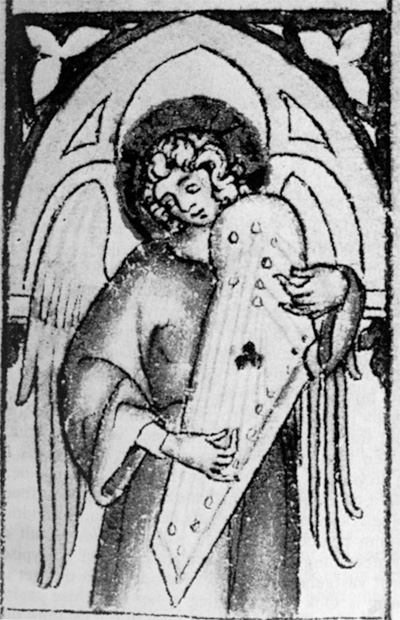Major concert recreates sound of ancient Greek instrument
Wednesday 24 June 2009 | Cambridge, UK and Catania, Italy:
Utilising the high speed GÉANT and EUMEDCONNECT networks, computer modelling allows harp-like Epigonion to be heard again
A unique collaboration between technology and art will be showcased in a major concert this week. The sound of the harp-like Epigonion, an ancient Greek instrument will be recreated using the GÉANT and EUMEDCONNECT networks and computer modelling technology by the ASTRA (Ancient instruments Sound/Timbre Reconstruction Application) project. The Epigonion will play alongside physical instruments in the Musica @ Fisica concert in Catania, Italy on the 26 June 2009.
The concert will also be broadcast live via the internet, accessible via GARR, the Italian research and education network, at (link not available). It starts at 20:00 Italian time/19:00 UK time and will feature a full repertoire of ancient music, ranging from folk songs to composers such as Purcell, Handel and Vivaldi. The Epigonion is a wooden string instrument with a sound similar to a modern harp or a harpsichord. Knowledge of the Epigonion is based on archaeological findings, historical pictures and literature. Using this archaeological data as an input, it was then transformed by a complex digital audio rendering technique to model the actual sound of the instrument. This advanced physical modelling synthesis creates a virtual model of the instrument and reproduces the sound that the instrument might have made by simulating its behaviour as a mechanical system.
The Epigonion is a wooden string instrument with a sound similar to a modern harp or a harpsichord. Knowledge of the Epigonion is based on archaeological findings, historical pictures and literature. Using this archaeological data as an input, it was then transformed by a complex digital audio rendering technique to model the actual sound of the instrument. This advanced physical modelling synthesis creates a virtual model of the instrument and reproduces the sound that the instrument might have made by simulating its behaviour as a mechanical system.
ASTRA’s computer modelling procedure needs extreme amounts of computing power, requiring half an hour of processing time for each minute of the concert. To achieve this it used the advanced GÉANT and EUMEDCONNECT research networks to link high capacity computers together, sharing information across the GILDA and EUMEDGRID grid computing infrastructures to enable the computer-intensive modelling of musical sounds.
“Our new concert will bring together ancient and modern, using technology to recreate the sounds of the past. This is not just of benefit to those listening but also provides musicians and historians with valuable insight for their own research,” says Professor De Mattia, Director of the Conservatory of Music of Salerno and Artistic Co-ordinator of the ASTRA project. “The combination of high capacity research networks, such as GÉANT and EUMEDCONNECT with grid computing provides the computing power we need to create a window into history.”
“The academic research community is increasingly global and digital, making user-friendly technology vital to projects across both the arts and sciences,” said Dai Davies, General Manager of DANTE, the organisation responsible for running GÉANT and EUMEDCONNECT. “Networks and tailored services provide the platform for this global collaboration. We are seeing increasing interest in innovative arts projects, such as ASTRA and look forward to this and future concerts.”
The benefits of the collaborative approach used in this project are far reaching. ASTRA not only makes it possible to recreate instruments that previously would have been either too expensive or too difficult to manufacture by hand, it also allows any model and its associated data to be accessed by collaborators. Research data can therefore be shared around the world, making it a truly international project of immense value to working archaeologists and historians.
For further information please contact: info@dante.net
Chris Measures/Clodagh Boyle/Matthew Watson
Speed Communications (on behalf of DANTE)
+44(0)20 7842 3200
dante@speedcommunications.com
About ASTRA: for more information about the ASTRA project visit the website at www.astraproject.org
About DANTE: for more information visit the DANTE website at www.dante.net
About EUMEDCONNECT: for more information visit the DANTE website at www.eumedconnect2.net

